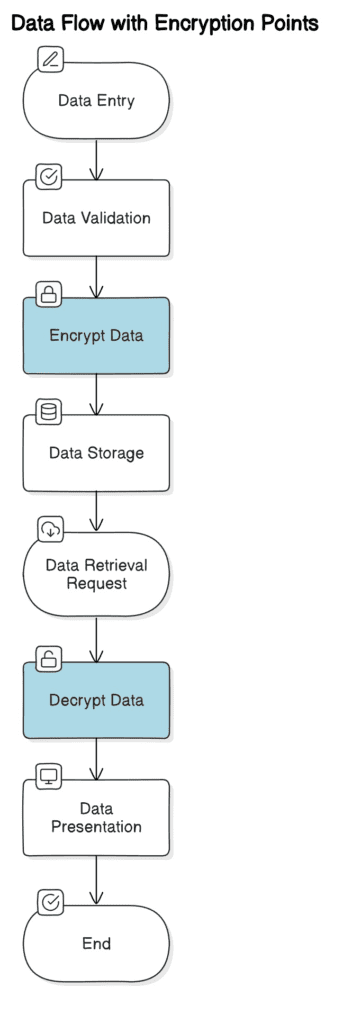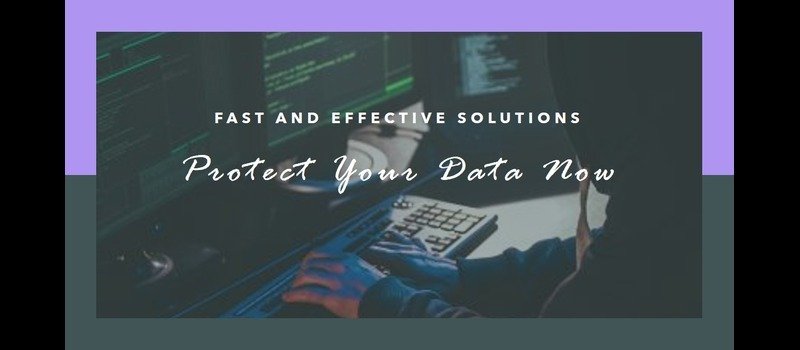Sensitive Data Exposure Vulnerability is a critical issue that can put your organization at serious risk. When personal or financial details fall into the wrong hands, the consequences can be severe—think data breaches, financial losses, and a tarnished reputation. So, Let’s explore some straightforward and effective steps to secure against these Sensitive Data Exposure vulnerabilities. In this article, We’ll walk you through actionable advice and technical solutions that are easy to implement.
Content
- What is Sensitive Data Exposure Vulnerability?
- Why Care About Sensitive Data Exposure Vulnerability?
- Sensitive Data Exposure Vulnerability: Ways of Quick Fixes
- Sensitive Data Exposure Vulnerability: Best Practices
- Sensitive Data Exposure Vulnerability: Suggested Tools and Resources
- Conclusion: Sensitive data exposure Vulnerability
- FAQs:
What is Sensitive Data Exposure Vulnerability?
Sensitive Data Exposure Vulnerability happens when a system or app doesn’t handle important information properly, leading to unauthorized access or leaks. Therefore, this could include personal details, financial records, or confidential data that should be kept safe. Simply put, it’s a breach where crucial information gets exposed because it wasn’t managed correctly.
Why is this a big deal to handle Sensitive Data Exposure Vulnerability?
- Firstly, a data breach can hit you with fines and legal costs.
- Additionally, your brand’s reputation can take a severe hit.
- Furthermore, your customers might lose trust in your ability to keep their information safe, which can have long-lasting effects on your business.
Why Care About Sensitive Data Exposure Vulnerability?
You might think, “Oh, that won’t happen to me.” However, here’s the reality: sensitive data exposure Vulnerability is standard. It’s one of the top security risks out there. When it does happen, the fallout can be severe:
- Firstly, you could face costly fines and legal issues.
- Additionally, your brand’s image can take a big hit.
- Moreover, customers might need more confidence in your ability to protect their information.
- Lastly, it can also lead to significant financial setbacks.
So, yeah, it’s something worth taking seriously.
Sensitive Data Exposure Vulnerability: Ways of Quick Fixes
Now that we’ve covered the basics let’s jump into some quick and effective ways to protect sensitive data.
1. Encrypt All the Things!
Encryption should be your go-to strategy. However, It’s like a secret code that scrambles your sensitive data so only the intended recipients can read it.
Here’s what you need to do:
- Firstly, use strong encryption. Go for powerful algorithms like AES-256.
- Secondly, encrypt everywhere. Ensure your data is encrypted both when it’s sent and when it’s stored.
- Additionally, remember backups. Encrypt your backups and logs, too.
Quick Tip: If you’re using a database, check if it has built-in encryption options. Most modern databases do so ensure you’re taking advantage of them!

2. Implement Proper Access Controls
Imagine access controls as bouncers for your data, ensuring only the right people get in.
Here’s how to set up adequate access controls:
- Firstly, apply the principle of least privilege. Only give access to what’s necessary for each person’s role.
- Secondly, use strong authentication. Robust authentication methods, such as two-factor (2FA), are essential.
- Additionally, conduct regular reviews. Regularly check and update who has access to ensure permissions are still appropriate.
Here’s a simple example of how you might set up role-based access control in a Node.js app using Express and a middleware function:
javascriptfunction checkRole(role) {
return function(req, res, next) {
if (req.user && req.user.role === role) {
next();
} else {
res.status(403).send('Access denied');}
}
}
// Usage
app.get('/admin-only', checkRole('admin'), (req, res) => {
res.send('Welcome, admin!');
});
3. Sanitize Your Inputs
Never trust user input. In fact, it’s like the golden rule of web security. Additionally, sanitizing inputs helps prevent nasty attacks, such as SQL injection.
Here’s what to do:
- Ensure all user inputs are validated on both client and server sides.
- Use parameterized queries for database operations
- Encode data when outputting to prevent XSS attacks
Here’s a quick example of input sanitization in PHP:
php$user_input = $_POST['user_input'];
$sanitized_input = filter_var($user_input, FILTER_SANITIZE_STRING);
4. Keep Your Systems Updated
Running outdated software is analogous to leaving your front door wide open. Consequently, attackers love finding old, unpatched vulnerabilities to exploit.
To stay on top of updates:
- Firstly, set up automatic updates where possible.
- Additionally, make sure to check for and apply security patches regularly.
- Finally, don’t forget about third-party libraries and dependencies.
5. Use HTTPS Everywhere
HTTPS is like a secure tunnel for your data to travel through. Specifically, it keeps prying eyes from seeing sensitive information as it moves between the user and your server.
To implement HTTPS:
- Firstly, get an SSL/TLS certificate (Let’s Encrypt offers free ones).
- Next, configure your web server to use HTTPS.
- Finally, use HSTS (HTTP Strict Transport Security) to force HTTPS connections.
6. Secure Your API Endpoints
APIs are often a weak point in security. However, they’re like the back door to your application, and they need just as much protection as the front.
To secure your APIs:
- First, strong authentication for API access is used.
- Additionally, rate limiting should be implemented to prevent abuse.
- Finally, validate and sanitize all API inputs.
Here’s a simple example of API authentication using JSON Web Tokens (JWT) in Node.js:
javascriptCopyconst jwt = require('jsonwebtoken');
function authenticateToken(req, res, next) {
const authHeader = req.headers['authorization'];
const token = authHeader && authHeader.split(' ')[1];
if (token == null) return res.sendStatus(401);
jwt.verify(token, process.env.TOKEN_SECRET, (err, user) => {
if (err) return res.sendStatus(403);
req.user = user;
next();
});
}
// Usage
app.get('/api/protected', authenticateToken, (req, res) => {
res.json({ message: 'This is a protected route' });
});
7. Don’t Store Sensitive Data If You Don’t Need To
The best way to protect sensitive data is to avoid having it in the first place. Only gather and keep what is necessary.
Here are some tips:
- Firstly, regularly review what data you’re storing.
- Next, delete old or unnecessary data.
- Finally, tokenization can be used for things like credit card numbers.
8. Monitor and Log Everything
Keep monitoring your systems. After all, if something fishy is going on, you want to know about it ASAP.
Set up the following:
- Firstly, real-time monitoring for unusual activities.
- Additionally, comprehensive logging (but be careful not to log sensitive data!).
- Finally, alerts for potential security incidents.
Click here to get more insight of Insider Threat: How to Secure Your Business
Sensitive Data Exposure Vulnerability: Best Practices
The quick fixes above are a great start, but here are some best practices to keep your data secure in the long run:
- Conduct regular security audits. Similarly, think of these as check-ups for your system’s security health.
- Train your team. Remember, your security is only as strong as your weakest link, so ensure everyone knows the basics of data security.
- Have an incident response plan. Indeed, it’s important to hope for the best but prepare for the worst. Know what to do if a breach occurs.
- Use a Web Application Firewall (WAF).It used to be highly protected for your web application, so stay away from misuse activities.
- Implement data masking. Instead, only part of sensitive data should be shown when full disclosure isn’t necessary.
Sensitive Data Exposure Vulnerability: Suggested Tools and Resources
To help you on your security journey, here are some tools and resources you might find helpful:
- OWASP ZAP: This is a free, open-source web app scanner that you can use to identify vulnerabilities.
- Burp Suite: In addition, it’s a popular platform for web app security testing, providing a range of tools for analysis.
- OpenSSL: Furthermore, this is a robust, full-featured toolkit for the TLS and SSL protocols, essential for secure communications.
- OWASP Cheat Sheet Series: This offers concise security guidance to help you understand best practices.
Conclusion: Sensitive data exposure Vulnerability
Sensitive data exposure Vulnerabilities is a significant threat to organizations. Therefore, to protect your information and maintain stakeholder trust, understand the risks and implement a robust security strategy. Additionally, regularly update your measures, stay informed about new threats, and promote a culture of security awareness to mitigate the impact of data exposure effectively.
Remember, data security is not just an IT challenge; it’s a shared responsibility involving everyone in your organization. Consequently, by working together and prioritizing data protection, you can build a resilient and secure digital infrastructure that withstands the evolving threats of the modern landscape.
Click here to get more insight about Cyber Security && Cloud-Security && DevOps-Security
FAQs:
How can I achieve a balance between security and performance for high-traffic applications?
Answer: Balancing security and performance can be challenging but manageable. Use efficient encryption algorithms and, if possible, hardware acceleration to enhance performance. Implement caching to decrease server load and enhance response times. Optimize code and database queries to maintain high performance while applying security measures. Additionally, consider a Content Delivery Network (CDN) to offload traffic and speed up content delivery.
What should I do if I discover a data breach in my application?
Answer:If you discover a breach, act quickly to minimize damage. First, contain the breach to prevent further loss. Next, assess its scope and impact, then notify affected parties as the law requires. Investigate the cause, patch the vulnerability, and update your security measures. Finally, document the incident and your response. Having an incident response plan in place is crucial for timely action.
How can I secure data in a microservices architecture?
Answer: Microservices increase security complexity, but you can manage it with several strategies: Implement strong service-to-service authentication, use API gateways to centralize security, encrypt all inter-service communication, apply the principle of least privilege, follow container security best practices, and ensure robust logging and monitoring. Treat each microservice as a potential entry point for attackers.
How do I handle sensitive data in development and testing environments?
Answer: Protecting sensitive data in non-production environments is crucial. Use fake or anonymized data for testing whenever possible. If accurate data is necessary, apply the same security controls as in production. Limit access to these environments, regularly clean up test data, and use data masking to protect sensitive information. Lastly, avoid using production credentials in non-production settings.
Originally posted 2024-08-27 00:42:06.


1 thought on “How to secure Sensitive Data Exposure Vulnerability”